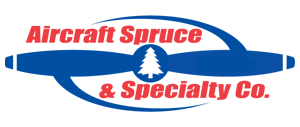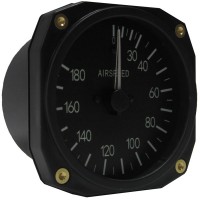SAME DAY SHIPPING ON ORDERS PLACED BY 4 PM | 877-4-SPRUCE
Cyclic & Collective: More Art & Science Of Flying Helicopters - Ebook
$50.95/Each
Part# 13-10432
MFR Model# 0620-EES-E
MFR Model# 0620-EES-E
Overview
|
This unique book, written from the perspective of the pilot, provides a detailed, yet easy to understand overview of the theory and practice of helicopters. It covers nearly all aspects of learning to fly a helicopter, from basic theory through autopilots. It offers detailed explanations for both the beginner and advanced pilots on performance, handling and the mechanics of helicopters. The fundamentals of helicopter theory, aerodynamics, performance and flying are reviewed initially.
Examples are based around piston engine helicopters and are given from a cockpit perspective. The advanced section is for professional pilots, as well as those who want to know more about helicopters and how they work. It also reviews turbine helicopters with more advanced systems. |
WARNING: Cancer and Reproductive Harm - www.P65Warnings.ca.gov. |
E-Book Specifications
- File Type: Adobe .pdf format
- File Size: 13.0Mb
- Print: unlimited
- Copy/Paste: unlimited
- Offline Access: yes
- Search: always
- Bookmarks: always
- System Reqs: Windows, Macintosh, iPad, and more
Print Specifications
- Publisher: Eagle Eye Solutions, LLC
- Copyright Date: 2009
- Pages: 458
- Binding: Paperback
- Dimensions: 11.0" x 8.5"
- Weight: 2.7lbs
Documents
Contents
- TABLE OF CONTENTS:
- Some Fundamentals
- Math and Physics Revisited
- Newton’s Laws
- Vectors, Resultants and Resolving
- Balance of Forces
- Mass, Force, Energy and Work
- Graphs and Such
- Putting Together the Basics
- Introduction to Helicopter
- Aerodynamics
- More Discussion of Lift
- The Rotor Blade
- Axes of the Blades
- How Lift Gets to the Hub
- Drag on the Whole Blade
- Blade Flapping
- More Basics of the Helicopter
- Generic Helicopter
- The Whole Rotor
- Relative Airflow and Disk
- Cyclical Change of Pitch
- Total Lift from the Disk
- Total Drag on the Disk
- Keeping the Blades Clean
- Flapback or Blowback
- Rotor Heads and Components
- Control of the Rotor
- Tail Rotors
- Air, Wind, and Weather
- International Standard Atmosphere
- Wrong Information
- Wind!
- Weather
- Basic Helicopter Performance
- Airframe Performance Defined
- Hover performance
- Out of Ground Effect (OGE)
- Power Required vs. Density Altitude
- Forward Flight Performance
- Low Airspeed Power Required
- Climb and Descent Performance
- V Airspeeds
- Load Factors
- Balance and Weight
- Center of Gravity
- Balance
- Weight and CG Diagram
- Longitudinal CG
- Lateral CG
- Vertical CG
- Balance of Forces in the Hover
- Trim
- The Aerodynamics of Autorotation
- Autorotation Defined
- Lift Vectors Again
- Effect of Forward Flight
- Instruments and Warning Systems
- Airframe Instruments
- Sideslip and Side Force
- Engine Transmission and Rotor Instruments
- The Piston Engine
- Principles of Operation
- Basics of Carburation
- Piston Engine Helicopter Instruments
- Starting
- Clutches
- Free–Wheel Units
- Piston–Engine Helicopter Power Control
- Measuring Piston Engine Helicopter Power
- Carburetor Icing
- Mixture Control
- Throttle Handling
- Over-Pitching
- Throttle Co–relators
- Fuel Injection
- Piston Engine Governors
- Turbochargers
- Other Components of the Engine
- Operation of the Piston Engine
- Before You Strap In…
- Prior to Lift-off
- Holding the Controls
- Effects of Controls
- Downwash
- Hand Signals
- Helicopter Flying - The Basics
- Effects of Controls in Forward Flight
- Attitude Flying
- Changing Airspeed in Level Flight
- Climbs and Descents
- Turns
- Developing a ‘Seat of the Pants’ Sense
- The Divine Art of Hovering
- Concepts of Hovering
- NR Control
- Partial Control Technique
- Specific Exercises for Learning Hovering
- Moving Around
- Hovering with Different References
- Turns in the Hover
- Taxing to the Side or Rear
- Ground Taxing Skid Helicopters
- Twixt Heaven and Earth,
- Transitions to Forward Flight
- Running Takeoff
- “Maximum Performance Climbout”
- Downwind Transition
- Turns After Transition
- Approach and Touchdowns
- Transition Back to the Hover
- Learning to Judge…
- ‘Normal’ Approach
- Fast Approaches
- Steep Approach
- The No-Hover Touch Down
- Downwind Approach to the Hover
- Approaches with Turns
- Running Landing
- Traffic Patterns or Circuits
- Lift-off and Touchdown
- Touching Down From The Hover
- Sloping Surfaces
- Introducing Emergencies
- Emergencies - General
- Critical Emergencies
- What Emergencies Can Happen
- Engine Failures for Beginners
- Collective Check - Why It Works
- Power Recovery Autorotations
- Autorotative Performance
- The Height-Velocity Curve
- Peculiarities of the Helicopter
- Loss of Translational Lift
- Vortex Ring State
- Rollover
- Retreating Blade Stall
- Blade Sailing
- Flight Manuals, Rules and Regulations
- The Civilian Flight Manual
- Philosophical Words about the Civilian FM
- Reasons for Rules
- Side Wind, Sideward Flight
- The Military Flight Manual
- Visual Flight Rules (VFR)
- For the Professional Helicopter Pilot
- Make a Decision
- Concepts of Controls
- Looking Outside
- Checklists
- Questions and Tests
- Advanced Helicopter Aerodynamics
- Airfoils
- Blade and Segment Aerodynamics
- Pitching Moments
- Blades
- Disk Aerodynamics
- Tail Rotors
- Flight Controls and Rotor Heads
- Rotor Heads
- Disk Axes
- Hinges
- New Rotor Heads
- The Teetering Rotor Head
- Hiller Control System
- Robinson R-22 and R-44 Hub
- MD Series Rotor Head
- Height of Hub Above the CG
- Advanced Performance
- Factors Affecting Performance
- Induced Velocity
- Typical Civil FM Performance chart
- Peculiarities of Low Airspeed IGE
- Range
- Endurance
- Climb and Descent Performance
- Whizz Wheels
- Rules of Thumb
- Other Components
- Fuel Systems
- Transmissions and Drive Shafts
- HUMS
- Electrical Systems
- Hydraulic Systems
- De-Ice / Anti-Ice systems
- Landing Gear
- Floats
- Fire Detection and Suppression
- Heating and Ventilation
- Compasses
- Windshield Wipers
- Advanced Helicopter Flying
- So How Do We Fly a Helicopter?
- Flying a Helicopter – Hovering
- Why are Helicopters Difficult to Fly?
- Control Forces
- Low Airspeed Systems
- Miscellaneous Instruments
- the Digital Era
- The Turbine Engine
- Typical Free Turbine Engine
- Ratings and Limitations of Engines
- Density Altitude vs. Pressure Altitude and OAT
- Governing systems
- Electronic Fuel Controls
- Turbine Engine Power Monitoring
- Automatic Relight vs. Manual Air Starts
- Engine–Related Items
- Turbine Engine Cool-Down
- Fixed Shaft Turbine Engines
- Advanced Engine Failures
- Autorotations
- Energy and Autorotations
- Intervention Delay Time
- Height Velocity (HV) Curves
- Advanced Emergencies
- Tail Rotor Problems
- Fires
- When to Inflate Pop-out Floats
- Emergencies Caused by Vibrations and Noise
- Multi-Engine Helicopters
- OEI Performance
- Engine Failures in Multi-Engine Helicopters
- Category A or Category B?
- Heliport Takeoff Techniques
- Stability and Control of the Helicopter
- Weight and Balance
- Inherent Sideslip
- Keel Area Ratio
- Fixed Floats Effect
- Equations of Motion
- Control Margin / Limitations
- Solving Aerodynamic Problems
- Further Peculiarities
- Vibrations
- Ground Resonance
- Tail Rotor Control
- Rapid Rolling
- Underslung Loads
- High Altitude Flying
- Icing
- Snow
- Flying in Your Own Dust
- Mast Bumping
- Other Helicopter Types
- Tip Jets
- Kaman Servo–Flap Controls
- Replacing the Tail Rotor
- NOTAR
- Night and Instrument Flying
- Instrument Flying
- Autorotations at Night, in Clouds, etc.
- Instrument Flying Rules (IFR)
- Automatic Flight Control
- Definitions
- Types of AFCS
- Automatic Trim Systems
- AFCS ‘Upper’ Modes
- Hover and Low Speed
- Autopilots
- Failures of the AFCS
- Miscellaneous Musings
- Type Ratings
- Minimum Equipment Lists (MEL)
- Using GPS Intelligently
- Torque Limiters
- Health, etc.
- Personal Equipment
- The Helicopter is Not a Winch or Bulldozer
- Simulators
- Learning to Say No
Q&A
Please note, Aircraft Spruce ®'s personnel are not certified aircraft mechanics and can only provide general support and ideas, which should not be relied upon or implemented in lieu of consulting an A&P or other qualified technician. Aircraft Spruce ® assumes no responsibility or liability for any issue or problem which may arise from any repair, modification or other work done from this knowledge base. Any product eligibility information provided here is based on general application guides and we recommend always referring to your specific aircraft parts manual, the parts manufacturer or consulting with a qualified mechanic.








 FREE Shipping
FREE Shipping

















